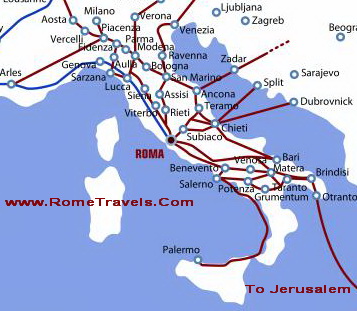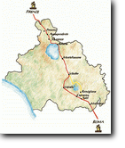Via Francigena | The Pilgrimage Route to Rome | Pilgrims' Routes - Rome Travels | Home | Rome Guide | Rome Tours | Rome Travel | Religious Holidays | Italy Pilgrimages | Italy Shore Excursions


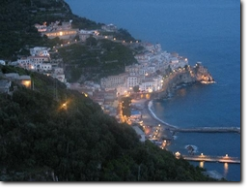
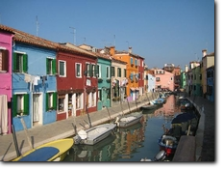
Main menu:
Via Francigena | The Pilgrimage Route to Rome | Pilgrims' Routes
The Name “VIE FRANCIGENE” - What does it mean ? The authentic route of the pilgrims.
The name “Francigena” was given to a road which assumed different names as it unfolded, but which always had just one international “horizon” as it was used to connect cities of the Italic kingdom with the countries on the other side of the Alps.
The name meant “way coming from France”, bearing in mind that in medieval times the term “France” not only referred to present-day France, but also the large Rhine Valley in Germany.
Related link: Vatican Guide
The "inventor" of VIA FRANCIGENA: The Archibishop SIGERIC
We are able to reconstruct the itinerary of the pilgrimage routes thanks to a document left behind by Archbishop Sigericus of Canterbury who, upon his return from Rome to his dioceses in 994, wrote down the names of the places/twons that had formed the stages of his journey.
Upon receiving his nomination as Archbishop of Canterbury, Sigeric travelled from England to Rome to receive the “pallium”, bestowed by Pope John XV and reserved to the metropolitans and primates as a symbol of their jurisdiction. He entered Italy via the Gran S. Bernardo pass on the Alps, and then crossed the entire Aosta Valley.
He reached Pavia through Ivrea and Vercelli, where the road links up with ancient Longboard route and then on to Tuscany, Umbria and Rome.
HISTORY of the VIA FRANCIGENA - A pathway to Paradise
Following the edict of Milan of the Emperor Constantine in 313 tolerating Christians' worship, Christian pilgrimage started to the burial places of the Apostles Peter and Paul, but also of the other Saints of the Catholic Faith. The road system of the vie Francigene became increasingly important after Archibishop Sigeiric and so a huge number of pilgrims began crossing Europe in search of the lost “Celestial Land”.
The pilgrims travelled to three major destinations: 1) Rome, the city of the martyrdom of St Peter and St Paul, the founders of the Christian church; 2) The Holy Land, site of Calvary, where the pilgrims sought out the places of Christ’s Passion; 3) Santiago de Compostela, the furthest point of western Europe (Finis Terrae) which the Holy Apostle James chose as his final resting place.
1) and 2) were some how connected. In fact, the routes of the Pilgrims then continued towards the ports of Apulia (Puglia) using the same consular Roman roads known as the Via Appia, Via Casilina and Via Appia Traiana, which then headed on towards Jerusalem or through the "Via Langobardorum".
In the Late Middle Ages, the Via Francigena started also to be called as Via Romea and Vie Romee, namely different roads (vie) that led to Rome (Romee). The way to Rome was probably the most important road of the those times, the Via Francigena or Via Romea which led to the Eternal City. It has been used for seven centuries by sovereigns, emperors, plebeians and clergymen.
The Via Appia Traiana was one of the greatest thoroughfares of the past centuries. The documents showed that the Via Appia and Via Casilina were the natural continuation of the via Francigena through the South of Italy.
Beyond Rome, it headed towards Capua and then onto Benevento, Canosa, where it headed towards the ports of Puglia. From here (Brindisi) merchants and travellers would set sail for the eastern Mediterranean. During the Middle Ages, it was covered by pilgrims going to the Sanctuary of San Michele Arcangelo on Mount Gargano, and to St. Nicolas of Bari (San Nicola di Bari)*, as well as those heading to the Holy Land via sea.
* His Holyness, Pope Benedict XVI, as of 12/06/2008 gave the administration of the Cathedral to the brothers Russian Orthodox.
For more info, see the Apulia's Official Tourism Portal, www.viaggiareinpuglia.it
We will be providing info, routes and itineraries mainly of the part of the Vie Francigene/Via Romea regarding Umbria, Tuscany and especially the Lazio Region, being in the vicinity of Rome.
Religious accommodations on request. Religious Travel packages. Private Transportation, our 12 hs assistance & lodging.
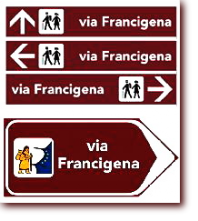
All Pigrimages Lead to Rome.
As now we know the Via Francigena led all the way from Canterbury to Rome and was one of the pathways of European history. It was a main thoroughfare along which hundreds of thousands of pilgrims passed on their way to Rome. In those days, the journey was not just an adventure or a risk but an act of devotion in itself, and the pilgrims would stop off along the way at places deemed holy by the Roman Catholic Church.
It is also known that pigrims often made testaments before leaving their homes to Rome. Or, once they left Rome on the way back home. The reason for the testaments were multiples: on the way, there were too many diseases, brigands, illness. The Notaries of those centuries got hundreds of documents that are still available.
Related Links
"Your Road of the Faith"
European Association of the Vie Francigene
Related Links
"Your Road of the Faith"
County of Viterbo
Related Links
"Your Road of the Faith"
Via Francigena
Related Links
"Your Road of the Faith"
Via Francigena Magazine
Related Links in the Apulia Region:
Last Minute in Puglia - Vacanze Gargano - Vacanze Salento : Le offerte e i lastminute per le tue vacanze in Puglia
The Via FRANCIGENA Today - ROME TRAVELS
Today, same Religious itineraries of the Medieval Pilgrimages
After having seen the passage of generations of pilgrims, the ancient pilgrimage routes are not much used. People prefer to see everything in one day.... The Jubilee celebrations in 2000 turned the spotlights back on, and various initiatives are now taken in order to modernise these ways so they can be handed on to third millennium wayfarers.
Thus, a thousand years later, there is a new desire to rediscover a road that once represented unity and communication between the different cultures and ideas of European Nations which are once again opened their borders. The Via Francigena bears witness to how even then there was a desire for unity in Europe.
Us, Rome Travels, wish to interprete an authentic journey of the spirit by proposing to the visitors good itineraries related to the route of the pilgrims.
We set up travel packages for travel agents, individual travellers or group of friends who want to recreate the route of the pilgrims traced for over a millennium in our Country.
Itineraries passing though Medievel Burgs, posting stages, stations, Cathedral and Sanctuaries, now having our private transportation at disposal (driver-car-minivan-minibus-bus) to better enjoy and see in one or more days the Pilgrims' routes of more than 1000 years.
The traces of this concentration of pilgrim activity are still very much to be seen today. The Via Francigena has been called " Your Road of the Faith ". Our pilgrimage travels can be arranged in combination with any other tour of your interest, either a religious tour or a general tour of Italy. Or both.
Coming closer to Rome, if we look at the Etrurian/Etruscan land, we can identify the route and the posting stages.
From Proceno, a resting station, the pilgrims moved on to Acquapendente which was a fundamental part of the journey as it contained a precious reliquary from the Holy Land, now kept in the crypt of the Cathedral.
The pilgrimage travelled down to Bolsena, an important town because of the miracle of the Corpus Domini and on to Montefiascone, a medieval town even then known for its wine. The next stage was Viterbo which, indeed, developed and grew up thanks to its strategic position on the Via Francigena. Viterbo thus became a cardinal destination on the itinerary and was well supplied with hospices and lodgings.
After Viterbo, one way led to Ronciglione and the little church of St. Eusebius. The other led through chestnut woods and we may still make out traces of an old path that passed by the Cistercian Abbey of S. Martino al Cimino.
The pilgrims would then make their way to Vetralla where a country road led them to the little church of Santa Maria in Forcassi, mentioned by Sigericus. After this, the road led to Capranica, Sutri, Monterosi and then the pilgrims left the Via Cassia for the Via Trionfale that led them, at the end, into the Vatican.
